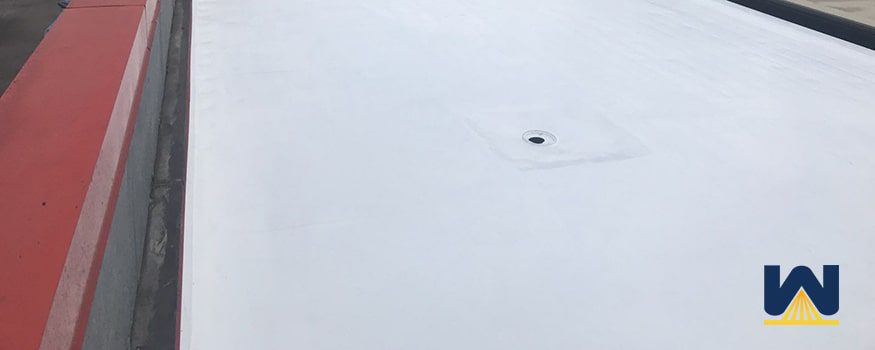So, you’ve heard the term “roof recovery” and how it’s a cost-effective alternative to a complete roof replacement.
The short answer is…you’re right!
Why would you throw away 80-90% of an existing roof if it’s in good condition?
But sometimes, there are scenarios where roof recovery isn’t a good option. For example, when more than 50% of your commercial roof’s insulation is wet.
In this article, you’ll learn:
- What is roof recovery?
- What roof recovery options do building owners have?
- What are a few examples where roof recovery was cost-effective?
- How does a roofing contractor determine if roof recovery is NOT a good option?
And just so you’re aware, we only write articles from true events and experiences. Every piece of content written at West Roofing Systems is produced in-house. Every article is reviewed and edited by a roofer/salesman with more than 30+ years of experience in the field.
Let’s get started!
What is roof recovery?
Roof recovery is when it’s beneficial to a building owner to install a new roofing system over their existing roof.
This is opposed to a complete tear-off, where 100% of the existing roof is torn off, and another roof system is installed, which is more expensive.
A few benefits of roof recovery vs a complete roof replacement include:
- The building owner saves money on labor costs because you aren’t removing 100% of the roof
- The building owner saves money because you won’t have to pay to transport as many materials to a landfill
- Reducing the number of materials that go to a landfill is good for the environment
- It will take approximately 50% less time to complete a roof recovery project versus a complete roof replacement
- With roof recovery, less material is used, which saves on costs.
NOTE: Installing a roofing system over wet insulation is never a good idea. When a roof is recovered, a roofing contractor will remove and replace the saturated areas. This may be 1% – 25% of the existing roof. This is cost-effective versus a complete roof replacement, where 100% of the roof’s membrane and insulation will be removed.
What roof recovery options do building owners have?
A building owner can recover their existing roof with any roofing system.
An existing TPO roof must be removed and another layer of TPO must be installed.
An existing BUR can add another layer of tar and gravel.
But what we’ve seen over the past 40 years is a rise in spray foam roofing and silicone roof coatings.
A spray foam roof is a material that’s sprayed as a liquid so it can expand into a foam.
The foam creates a solid layer across an existing roof.
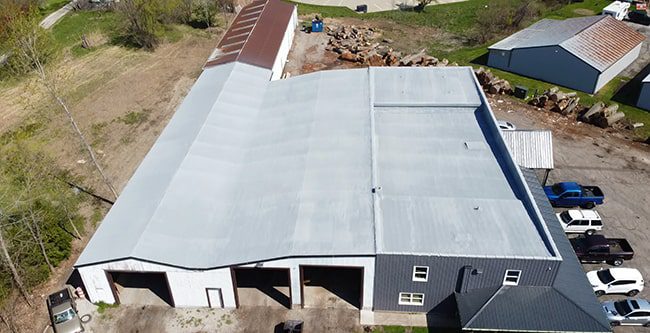
There are many pros and cons of spray foam roofing.
Silicone roof coating systems are a single layer (applied in one or two coats) of silicone that’s rolled or sprayed on as a liquid to fill in cracks, blisters, and seams.
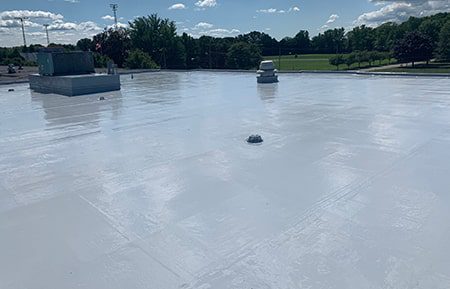
There are many pros and cons of silicone roof coating systems.
Our advice: When choosing which system to install, get a quote from contractors that install different roof systems. Have them tell you why each roofing system is beneficial to you. Automatically sticking to one roofing system could leave you missing out on more cost-effective recovery options.
What are a few examples where roof recovery was cost-effective?
Metzenbaum Center is a developmental disabilities facility in Geauga County, Ohio. They had a 20-year-old roof and a strict budget.
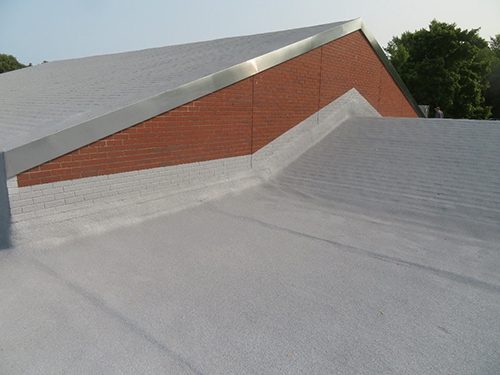
They choose the spray foam roofing system to recover their roof and stay within budget instead of a complete roof replacement.
Click here to view the complete case study of Metzenbaum.
Midview High School had an EPDM roof that had an expected lifespan of 3-4 more years. They are moving the school to another building in 11 years.
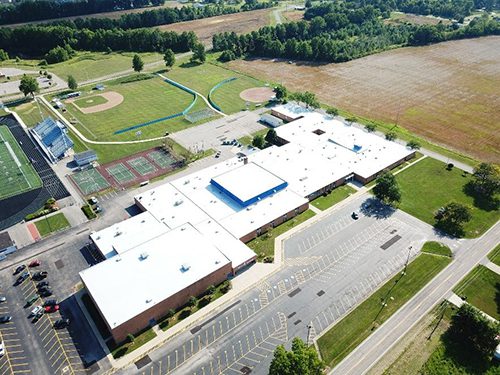
They had a tough decision, let the roof go on for 3-4 more years and be forced to completely replace the roof.
Or, they could recover the existing roof today, and get an 11-year warranty, which will put the roof under warranty until it’s time to move.
Click here to view the complete case study of Midview High School.
NOTE: Metzenbaum and Midview were fortunate to reach out to roofing contractors before the damage of their roof made it ineffective to recover. Unfortunately, some building owners neglect their roofs and only begin the repair process once water is entering the building. In some situations, it isn’t beneficial to recover.
How does a contractor determine if roof recovery is NOT a good option?
You may be thinking, “Why would I choose to rip everything off when roof recovery is more cost-effective?”.
Sometimes, it’s in the building owner’s best interest to lean towards the roof replacement.
Here are some reasons:
Already have two roofing systems installed
Per building code, the maximum number of roof systems that can be installed on a commercial building is two. If you already have two roofing systems installed, you must remove at least one system before installing another one.
Too much water in the roof’s insulation
If your roof is leaking, there’s a good chance that the insulation is holding water. If more than 25% of the roof’s insulation is wet, removing everything and starting over is beneficial. A roofing contractor identifies the amount of wet insulation through:
- the pulling of core samples
- visual inspections
- infrared surveys
Seams are in poor condition
If you have a single-ply roof where the seams are coming apart, it’s most likely beneficial to rip everything off. Loss of seam adhesion is a common way water gets into the insulation. If a seam is in terrible condition, there’s a good chance that a large amount of water has gotten into the roof system.
The roof has been neglected for several years
If the roof hasn’t been looked at in several years, there’s a good chance that significant damage has happened to the roof.
One example is that leaves have probably clogged the drains over the years. When the drains are clogged, water doesn’t leave the roof as it should, which causes damage to the membrane, adhesives, seams, etc.
Other examples are when a crack, cut, slit, or blister occurs on a roof. If someone was checking the roof periodically, the repair can be made quickly. If the roof is neglected, water continually enters the insulation through the same incision and saturates a large section of the roof.
What should you do now?
Hopefully, you learned at least one thing new about roof recovery systems. The most important thing to remember is that you have options.
You can recover your roof with any roofing system you’d like.
You can even choose to completely replace your roof even if it’s eligible for recovery.
The best thing a building owner can do is to contact a roofing contractor with experience. They will walk the roof with you, point out what they see, and give you the most cost-effective repair options.
West Roofing Systems has been in business since 1979. 99% of our work is done recovering and restoring commercial roofing systems. Depending on what your goals are, for example:
- I need more R-value
- I need to eliminate standing water
- I need a new 15-year warranty
We can develop a custom, cost-effective roofing solution for your roof.

